Alexandra Pirici is a self-taught artist working predominantly in performance, who developed her work around the concept of immaterial labour, a term that describes the act of producing affective and cognitive commodities outside the traditional wage-based consideration of labour as a material-commodity-producing activity. Her interdisciplinary approach combines aspects of visual arts, network culture and finance in a way that have brought her ever increasing international attention.
To better understand why her immaterial works are so relevant in the contemporary European art scene, and to encourage further awareness of her practice in the local scene, I initiated a conversation with the artist.
Throughout your artistic practice, information from art history or popular culture is accessed and reframed through a process of dis-embodiment and re-embodiment taking place in the movement of collective bodies. How do you see the human body playing a role in knowledge production?
Indeed, I am interested in remediating information, which also means producing it anew. I see the body as a medium and technology that interacts, constructs and uses other mediums and technologies and is used and constructed by them at the same time. So, for me, embodiment refers to a relation between us and our environment and how we can make better sense of it.
Did you find any example that shows the existence of the re-embodiment of information as a type of habit existing outside the art scene?
For sure there are many examples, I think a certain understanding of “cannibalism”, not as derogatory, colonial scare mongering but as a process of filtering, digesting and remixing (which also happens digitally) can be very helpful in tracing all sorts of practices back to this root.
One example that comes to my mind is Les Maitres Fous, a film by Jean Rouch, a French ethnologist, documenting but also fictionalizing the Hauka movement – a form of resistance to British colonialism that spread through parts of Africa, consisting of mimicry of British Colonial administrators and dancing as means to become possessed by their powers. The participants performed a re-embodiment of their colonial occupiers in a state of trance, mainly in order to mock their authority and extract their life force.
Taking a certain distance, your immaterial works in public spaces such as If You Don’t Want Us, We Want You, (Bucharest, 2011), Soft Power (St. Petersburg, 2014) and the Turning Monument sculptural addition at the Baltic Circle (Helsinki, 2015) appear to perform a similar dissimulation in order to unmask one legitimizing icon in the nationalist discourse of identity, that of the equestrian portrait. Why do you think these types of investigations into cultural rhetoric are important today?
In the case of Turning Monument, the performers enact a group of people/ pedestrians, held on the side of same pedestal as the equestrian by another group of people. Their positioning on the pedestal tries to shift the vertical – horizontal axes and to perform a transformation from portrait to landscape, inviting you to tilt your head in order to look at their group and to shift your attention from the equestrian to the collective.
In general, my work with public monuments attempts to find a way to interfere with the assigned meaning of these constructions in hard, immutable materials; it is a way of engaging with and also re-performing history, of making it fluid and produced anew with living bodies. I think this type of interference and rendering fluid of assumingly fixed heritage (that I was also interested in from If you don’t want us we want you to An Immaterial Retrospective of the Venice Biennale, Public Collection, Signals and Parthenon Marbles) is important for how we understand both history and memory as being subjective, constructed, projected and projectable, editable, updatable. Especially within the current political landscape, where one has all of a sudden discovered “post-truth” politics, I find it quite useful to look into this ongoing re-writing and re-performing of narratives.
You’ve worked recently at a workshop organized by the Gerrit Rietveld Academy for their basic year students. Together you’ve realized a performative exercise called Organism, which was presented as part of What is Happening to Our Brain? Art & Life in Times of Cognitive Automation conference program at the Stedelijk Museum, Amsterdam. The event presented an investigation of the processes that take place on the collective capacity to think, feel and imagine in relation to the Internet, various forms of AI which populate the digital space and private agencies mediating the communication between those. What was your contribution to this discussion?
I proposed something like an exercise in distributed, networked decision-making, a practical, corporeal enactment of a sort of hive-mind and intelligent mass, and a reflection on feedback-loops, co-dependency, history, memory and interpretation. It was quite an ambitious endeavor, working with around 100 basic year students, some as young as 17.
What were you looking to accomplish through this exercise?
As a starting point, we discussed the need to imagine another world-view, one that departs from exclusive anthropomorphism, fictional individualism and colonial ethos and understands the world as entanglement, mutual constitutive flows in an inter-connected “global village”.
Are you referring to Marshall McLuhan’s syntagma of “global village”, as it appears in Understanding Media. The Extensions of Man? What are the alternatives to “fictional individualism” and exclusive anthropomorphism in which you are interested?
Well, I think the web produces contradictions in terms of community formation. On the one hand it does shrink vast territories into what seems like a “global village”, on the other hand the connections if affords suffer from a certain displacement, a lack of sense of place. So it brings users together while also deterritorializing, uprooting them, which also affords an ongoing fragmentation. A recent Reddit experiment, called Place, shows how online dynamics foster both connection and tribal division into factions. In that sense, I think we are quite far from a certain homogenization of affects – though there is of course an ongoing appetite for spectacle that most online platforms produce via their protocols.
What I am interested in, as alternatives to individualism and anthropomorphism, is something that is also contained, as a possibility, within the world wide web, the much talked about “hive mind” that could go beyond producing only pepe memes, dicks, flags and cat photos, if only it were “trained”, like neural nets, on different, more complex databases. And this online ecosystem also includes bots and different types of AI that perform, as users, just as much as humans do. This entanglement is also something that interests me, as we could actually learn from other types of intelligence – provided we understand our very important role in directing and producing it.
I take here the opportunity to discuss your ongoing action, Parthenon Marbles, presented as part of the Future Climates curatorial program and The School of Redistribution at State of Concept in Athens. Would you like to make a short introduction to the context of your most recent work?
To get some perspective, the Parthenon Marbles are a collection of Classical Greek marble sculptures, metopes and friezes that were originally part of the temple of the Parthenon and other buildings on the Acropolis of Athens. More than half of the ensemble is in the collection of the British Museum since 1816 after being controversially removed from the Parthenon by a British Ambassador to the Ottoman Empire that ruled over Athens at that time, and is now requested back by Greece.
This performative version of the marbles was installed both on the Acropolis, in front of the Parthenon, and in other locations such as Kadist Paris and State of Concept gallery space in Athens and will hopefully travel further.
What is the subject matter you’re addressing in Parthenon Marbles?
My work evolves around this request of repatriation as a metaphor and an entry point into a larger discussion about capital, accumulation, circulation, redistribution, derivative logics and the role of the arts within today’s economies. I basically proposed a performative repatriation, an immaterial version of the sculptural ensemble, not “instead of” the material marble sculptures but as a reminder, a metonym, an instantiation of their presence, as a gesture of reclaiming them through the performers’ bodies and memory, in spite of the British Museum’s refusal to return the originals. The work’s own “immaterial” consistency, let’s say, proposes a model for a more flexible and open-ended idea of exhibition making, forms of display, artistic patrimony and sense of belonging. In that sense I also see it as being able to better address issues related to structural inequality and movement of “solid capital”, and to imagine a better redistribution of existing resources.
How did your collaboration with Victoria Ivanova contribute to better address these issues?
The textual layer performed as part of the work is drawn from a collaboration with curator and writer Victoria Ivanova, looking at the work in relation to the financial concept of “derivative” – as a tool for identifying concrete but obscured socio-economic advantages of holding prized artifacts as well as a means for redistributing value through dematerialization/re-materialization and re-circulation. Thus, the performers tell a story about the sculptures’ journey from one place to another, speak about situated universal museums, de-localizing and re-situating, comment on dance and finance, migrant subjects-objects and transnational heritage.
I understand that the financial network or infrastructure is invoked, in Parthenon Marbles, through what you call “a textual layer” spoken by the performers. How is the movement of the collective bodies capturing the story you and Victoria created, in the embodiment of the Parthenon marbles?
There is or there should be no direct overlap or relation between meaning produced by spoken words and meaning produced by gestures, only more subtle associations, which is also the difficult part of the work, in terms of performing it. I was interested in a certain abstraction, finding a way for the spoken words to move the body, without having the body movement illustrate the text, so that the final outcome and quality of presence would feel grounded, intimate and alien at the same time.
One of the Future Climates curators, Antonia Alampi visited Bucharest last year as part of a curatorial program and series of conferences organized by Salonul de Proiecte, La seral II. There she presented an investigation of the curatorial act as a type of institution building through careful intertwining between the artistic and social network. How did your artistic collaboration strategy and the curatorial practice meet during this project and is the work intended to contribute to the present context of Athens?
For the Parthenon Marbles work, in particular, we try to devise contractual obligations and a model to help register how all contributions aggregate to construct the work (which also doesn’t mean that they are equal in terms of time-investment, effort, skills and knowledge). It should be a model of redistribution – for example, finding partner institutions in Athens that would benefit from a percentage of the budget for future re-installations of the work or the already set-up condition for re-installation, stipulating that three out of five performers should always be Greek, or based in Greece, so as their fees could somehow benefit their networks. I also try to work with the same collective of performers or mix groups of local performers and performers I have worked with before and I try to invite for a new work or a re-installation.
What we are looking into is a possibility to grow together and to find sustainable and fairer models of functioning and of also entering the market – but it’s not an easy task and is never an easy process.
Your artistic practice employs and experiments with different communication strategies. Throughout our conversation I believed we touched on some – like the re-organization of representation through bodily movements, the embodiment of information regarding what is performed in the performer’s voice and physical encoding of data through ritual performance. But what type of knowledge are you interested in proliferating?
I guess I see art and art spaces as possibilities to unpack “reality” or whatever we feel surrounded by, to reflect on it and find ways of re-configuring it. I do believe in the importance of a strong connection with the body – which can be anything, really – not as some sort of essentialism, but as a means of grounding theory into practice, of testing how concepts manifest, of keeping a dialogue between the material and the conceptual. I see practice and the encounter with the living body as producing theory and influencing concepts just as much as the concept influences its final materialization.
I believe we find this ratio between theory and practice in the domain of ecology, where scientific advances are rooted in a consequential view of human behaviour. This has enabled us to understand how discrete spatial and temporal patterns of behaviour actually impact the environment. In the Manifesto for the Gynecene you wrote together with Raluca Voinea back in 2015, you point out some of the problems we’re dealing with today and make a call for the urgent development of a model of eco-feminist stewardship. What examples of such socio-political model exist or have existed that can share more light on the direction you’re proposing?
In general, I am all for identifying emancipatory moments from the past but I’d rather think of “progress” as being actually inspired by the future, so I would rather look for models in the science fiction of Octavia Butler or Ursula Le Guin, for example.
I see the Manifesto for the Gynecene as being quite a distinct project from my art practice, even though, of course, I stand by the same principles in my practice as well or I try to, as much as I can. And I don’t think I can provide a model for a better future – as I also can’t provide a mode of operation for my artistic practice as well, but rather principles or directions of thought, all included in the manifesto and some manifesting in my artistic practice as well (hopefully).
The conversation took place via email between March 28 and April 17, 2017, and I would like to express my gratitude to Alexandra Pirici for her generous contribution to it.
POSTED BY
Carmen Casiuc
Carmen Casiuc (b. 1994) is an independent art researcher and critic working with ideas and actions that ignite the role of imagination in theoretical science. She studied History and Theory of Art at...

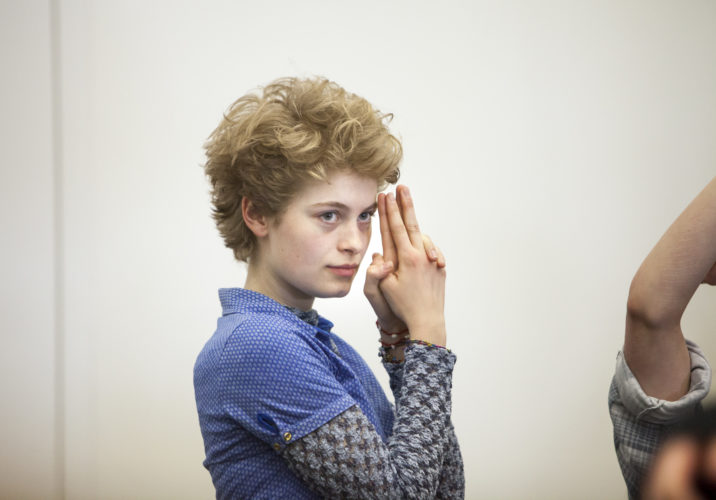
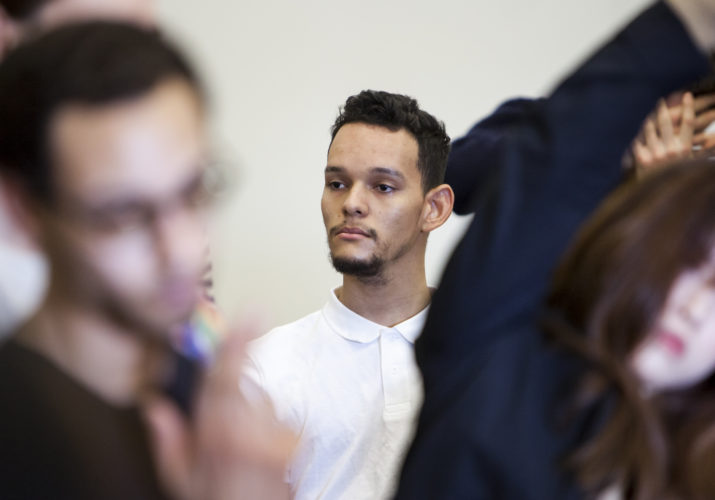
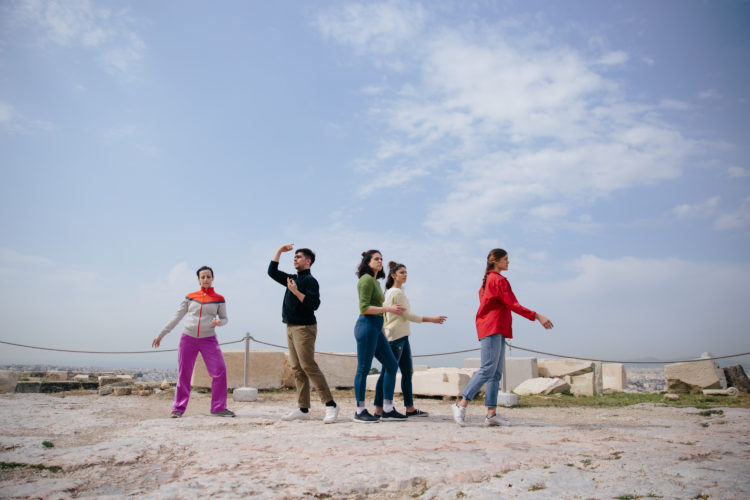
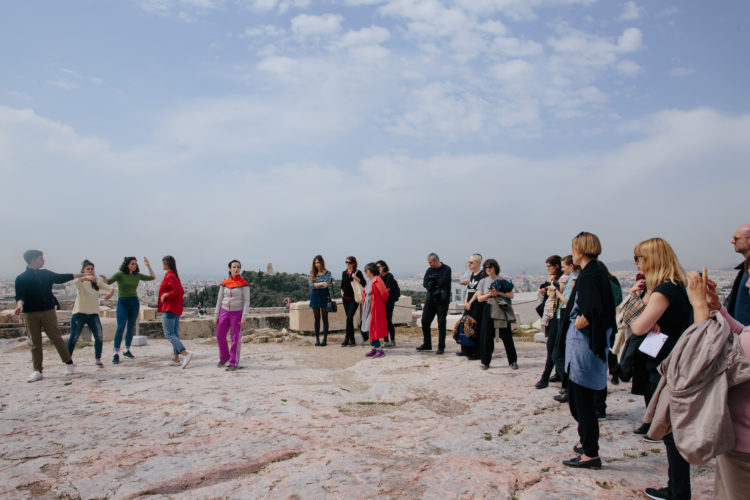
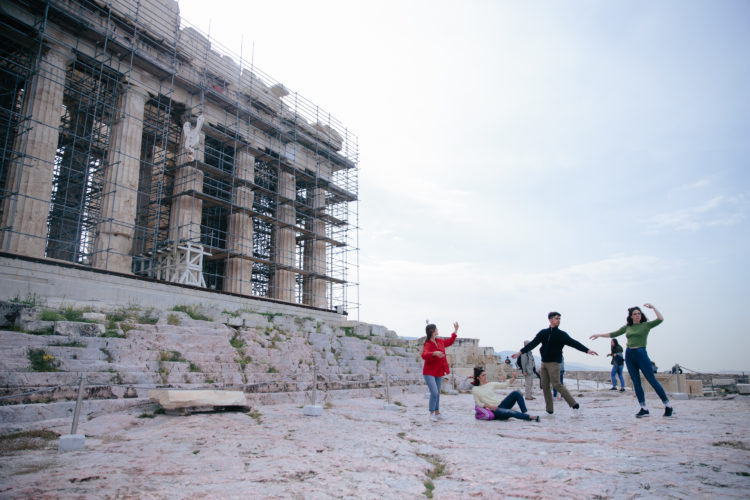
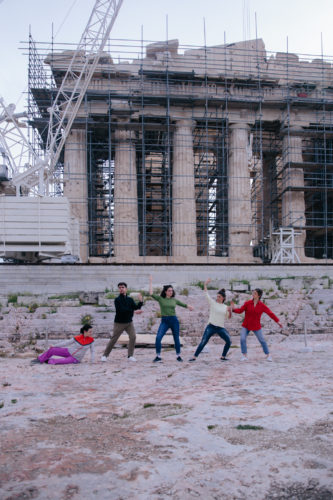
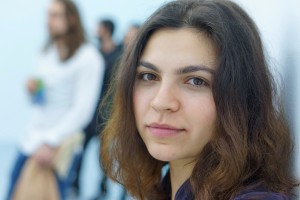
Comments are closed here.